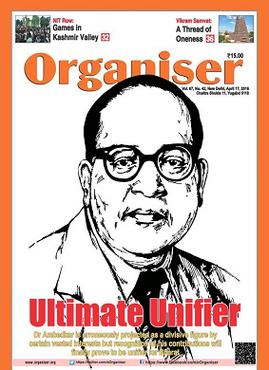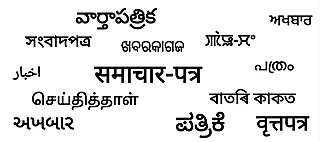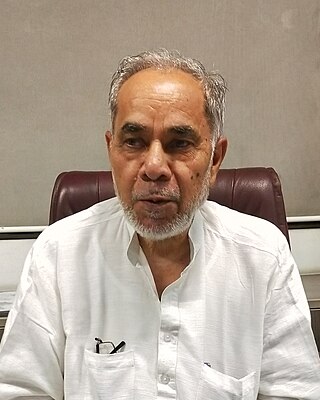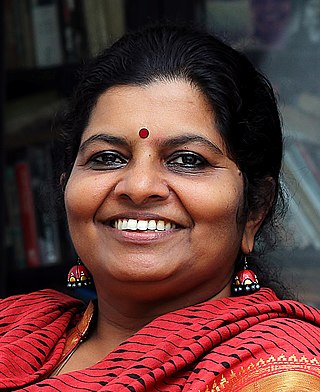
The Times of India, also known by its abbreviation TOI, is an Indian English-language daily newspaper and digital news media owned and managed by The Times Group. It is the fourth-largest newspaper in India by circulation and largest selling English-language daily in the world. It is the oldest English-language newspaper in India, and the second-oldest Indian newspaper still in circulation, with its first edition published in 1838. It is nicknamed as "The Old Lady of Bori Bunder", and is an Indian "newspaper of record".
Mass media in India consists of several different means of communication: television, radio, cinema, newspapers, magazines, and Internet-based websites/portals. Indian media was active since the late 18th century. The print media started in India as early as 1780. Radio broadcasting began in 1927. Today much of the media is controlled by large, corporations, which reap revenue from advertising, subscriptions, and sale of copyrighted material.
The Sangh Parivar refers, as an umbrella term, to the collection of Hindutva organisations spawned by the Rashtriya Swayamsevak Sangh (RSS), which remain affiliated to it. These include the political party Bharatiya Janata Party, religious organisation Vishva Hindu Parishad, students union Akhil Bharatiya Vidyarthi Parishad (ABVP), religious militant organisation Bajrang Dal that forms the youth wing of the Vishva Hindu Parishad (VHP), and the worker's union Bharatiya Kisan Sangh. It is also often taken to include allied organisations such as the Shiv Sena, which share the ideology of the RSS.

Doordarshan is an Indian state-owned public television broadcaster founded by the Government of India, owned by the Ministry of Information and Broadcasting and one of Prasar Bharati's two divisions. As one of India's largest broadcasting organisations in studio and transmitter infrastructure, it was established on 15 September 1959. Doordarshan, which also broadcasts on digital terrestrial transmitters, provides television, radio, online and mobile services throughout metropolitan and regional India and overseas.
The television industry in India is very diverse and produces thousands of programs in many of the Indian languages. More than half of all Indian households own a television. As of 2016, the country had over 900 channels of which 184 were pay channels. National channels operate in Hindi and English, in addition to channels in several other languages including Telugu, Tamil, Kannada, Malayalam, Bengali, Marathi, Odia, Punjabi, Assamese, Gujarati, Urdu, Bhojpuri, Kashmiri, Konkani and Haryanvi, among others. The Hindi, Telugu and Tamil language television industries are by far the largest television industries in India.

The Press Trust of India Ltd., commonly known as PTI, is the largest news agency in India. It is headquartered in New Delhi and is a nonprofit cooperative among more than 500 Indian newspapers. It has over 500 full-time employees as of 1 January 2022, including about 400 journalists. It also has nearly 400 part-time correspondents in most of the district headquarters of the country. PTI also has correspondents in major capitals and important business centres around the world. It took over the operations of the Associated Press of India from Reuters in 1948–49. It provides news coverage and information of the region in both English and Hindi.

Dainik Jagran is an Indian Hindi language daily newspaper.

Organiser is a mouthpiece of the Hindutva voluntary organisation Rashtriya Swayamsevak Sangh (RSS). It was launched as a newspaper in 1947 in the weeks before the Partition of India. The newspaper has been edited by A. R. Nair, K. R. Malkani, L. K. Advani, V. P. Bhatia, Seshadri Chari and Dr R. Balashanker. It has promoted misinformation on many occasions.
Tejeshwar Singh was an Indian publisher, journalist, newscaster and theater activist.

Hindi media refers to media in Hindi language and its dialects, across the Hindi belt in India, and elsewhere with the Hindi-speaking Indian diaspora.

Ram Bahadur Rai is a senior Hindi journalist. He is Former news editor of Hindi daily Jansatta. He has published and authored and edited several of books. He is known for some impressive biographies, written in Hindi, namely Shashwat Vidrohi Rajneta based on life and acts of Gandhian socialist Acharya J. B. Kripalani, Rahvari ke Sawal on Chandrashekhar and Manjil se Jyada Safar on V P Singh. He was a close associate of the Indian freedom fighter and political leader Jayaprakash Narayan and was also part of a Steering Committee of JP Movement.

Udant Martand is the first Hindi language newspaper published in India. Started on 30 May 1826, from Calcutta, the weekly newspaper was published every Tuesday by Pt. Jugal Kishore Shukla. It was closed on 4 December 1827 due to financial crisis.

The Media in Gujarati language started with publication of Bombay Samachar in 1822. Initially the newspapers published business news and they were owned by Parsi people based in Bombay. Later Gujarati newspapers started published from other parts of Gujarat. Several periodicals devoted to social reforms were published in the second half of the 19th century. After arrival of Mahatma Gandhi, the Indian independence movement peaked and it resulted in proliferation of Gujarati media. Following independence, the media was chiefly focused on political news. After bifurcation of Bombay state, the area of service changed. Later there was an increase in readership due to growth of literacy and the media houses expanded its readership by publishing more editions. Later these media houses ventured into digital media also. The radio and television media expanded after 1990.

The Rastriya Samachar Samiti, having a nationwide network, is the largest and longest serving news agency in Nepal. It was established in 1961 under the Rastriya Samachar Samiti Act, 2019 BS, merging two privately owned news agencies with a view to facilitating newspapers and broadcast media. With the development of news media in Nepal, subscribers of RSS have reached more than 100 newspapers, radio, online media and television. A pool of permanent and stringer reporters scattered throughout the country contributes to the news service and photo file every day.
United Press of India was one of the important news agencies during British Raj in India. It was established in 1933 by Bidhu Bhusan Sengupta, who was also the first managing director of the agency.

United News of India, abbreviated as UNI, is a multilingual news agency in India. It was founded On 19 December 1959 as an English news agency. Its commercial operations were started from 21 March 1961. With its Univarta, a Hindi news service, UNI became one of the multilingual news service in the world. In 1992, it started its Urdu news service and hence became the first news agency to provide Urdu news. Currently, it is the second largest news agency in India, supplying news in English, Hindi, Urdu and Kannada languages. Its news bureaus are present in all state capitals and major cities of India.
Samachar was founded in February 1976, after the merger of United News of India, Press Trust of India, Samachar Bharati and Hindustan Samachar. The news agency was directly under the control of the government of India.

K. A. Beena (കെ.എ.ബീന) is an Indian author, journalist, and columnist who writes in Malayalam on a variety of topics, particularly social issues affecting women. Her publications include memoirs, magazine articles, travelogues, children's books, essay collections, short stories, and history books about journalism and media. She is currently the assistant director for the Ministry of Information and Broadcasting's Bureau of Outreach and Communication.
Akshay Kumar Jain (1915–1993) was an Indian independence activist, writer, journalist and the editor of Navbharat Times, a Hindi-language daily owned by The Times Group. He was one of the founders of the National Union of Journalists (India) and held the chair of its reception committee when the organization was formed in 1972.










